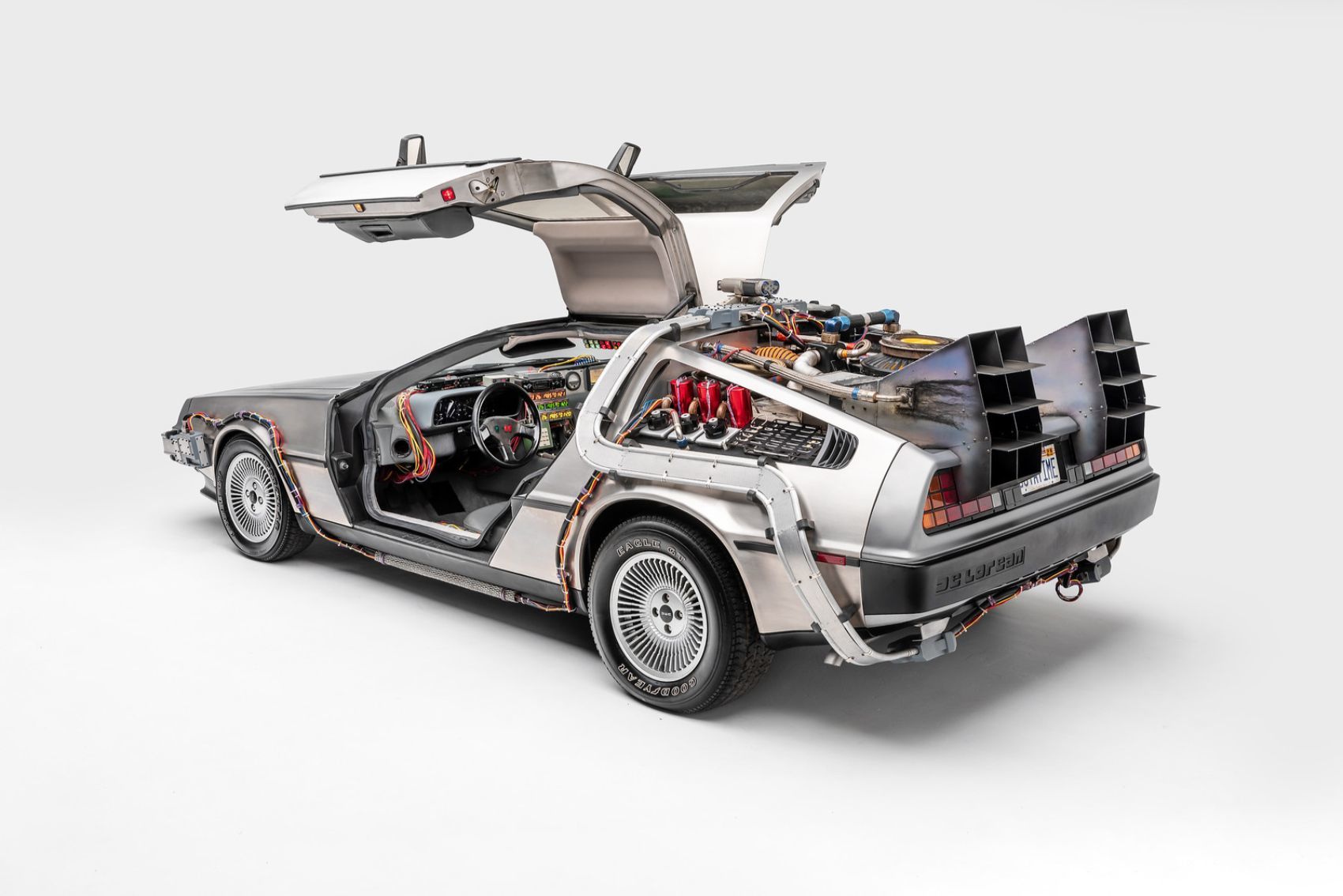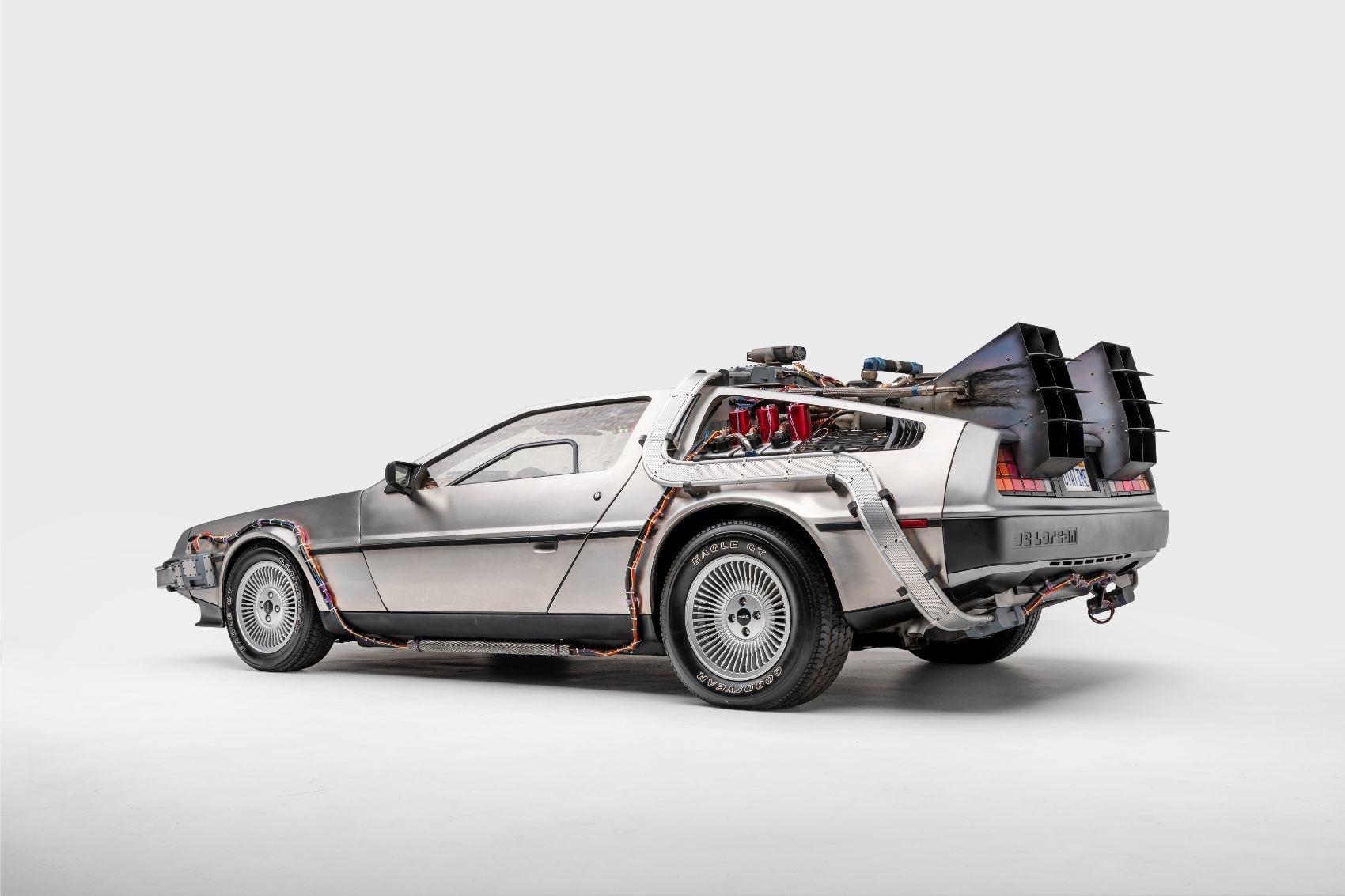- The Back to the Future series is just as enjoyable today as it was 30 years go.
- We examine some of the technology in the film to see if any of it came true.
- While the DeLorean was a real car, what about drones and hoverboards?
- In some areas, it’s almost as if the filmmakers predicted the future.
- Back to the Future was the single highest-grossing film of 1985.
- It was followed by two other installments in 1989 and 1990.
Back to the Future Part II is Robert Zemeckis’ follow-up to his 1985 classic about love, time travel, small town bullies based on the current president, and DeLoreans. Released in 1989, it was set in the far off future world of 2015, a time replete with totally cool tech like drones, flying cars, and hoverboards.
Now in 2020, five years beyond when Back to the Future Part II is set, and over 30 years since the film came out, how much did they get right concerning the technology in the film, versus what we have today? Turns out, the filmmakers were not that far off on a few things after all.
What About Drones?
Even in ’89, you could see this was going to be “a thing.” The drones in Back to the Future Part II are easy in terms of giving an A grade to Zemeckis and producers Bob Gale and Neil Canton for their tech prediction. Furthermore, figuring out which year this predicted tech would have come true is also pretty easy, since various aerospace companies, Boeing for one, were already flying drone prototypes as surveillance platforms. Zemeckis, Gale, and Canton simply took what was already happening, improved it, and made it look more ubiquitous.
- Related: Back to the Future creators foresaw drones in the near-future.
Drones are going to become even more commonplace. Sure, they are fun toys to play around with, but the practical, even non-defense applications are many. They are already doing great things with drones in the movie production world. The same goes with strapping cameras to them for cool shots at football games, golf matches, and other high-profile events.
How To Grade Flying Cars?
Flying Cars, on the other hand, get a big fat F for accuracy of tech prediction. And that’s probably not going to hurt the filmmakers too much either. In Tales from the Future: Time Flies, Back to the Future Part II they explain how they figured beforehand that flying cars were not going to be around in 2015.
I know some want flying cars, but it ain’t gonna happen. Sorry. Besides the technical hurdles – overall weight, power density of fuel sources etc. – consider this: your morning commute. Think of all the crazy, oblivious stuff your fellow motorists do on any random drive to work on any random day. And now you want to give these near-morons another dimension to deal with? Yeah, right.
I don’t see flying cars becoming viable in the foreseeable future, not even in 100 years. Sure, people keep trying, so the landscape for this tech is still chugging forward. The real problem with making a flying car is like when they made those Amphicars back in the 1960s. Sure, it was a cool concept – but it ended up being a terrible car and a terrible boat, all in one vehicle. The same would probably apply to any flying car: it’ll drive awful, fly terrible, and look ugly. Why bother.
The Amphicar had its time in the limelight, appearing in several films, a Madonna video, and a Pepsi commercial. But it’s a one-hit wonder and flying cars would be too.

How About Jumping On a Hoverboard?
Technically speaking, the same thing goes for hoverboards; those ain’t going to happen either. Look, there’s a lot of appeal here. I skated for many years, designed and raced downhill skateboards, and frictionless motion does sound ever so appealing. However, the grade for the accuracy here probably is in the D range, maybe a C minus if we are allowing for a curve.
The reasons are twofold. First, we’re talking about some sort of magnetic levitation system. This is a well-known and workable thing, but a well-known and workable thing for trains. Trains are big and heavy and can carry great loads. Maglev tech requires a whole bunch of stuff – superconducting magnets, for one thing – that are not amenable to fitting into a skate deck that can be lifted by a human, let alone a kid.
Need Some Grip With That Air
The other thing is that you actually want some grip. How would you generate cornering forces? I know someone actually made a hoverboard that could run for a couple of minutes across a special surface (the other pole of the magnet). The superconducting magnets on the board could only stay within operating temps for a short while, but they were able to get it up and running.
They also had the brilliant idea of getting Tony Hawk, probably the greatest skater ever (if you don’t count Rodney Mullen), to give the thing a try. He was laughing and geeking out with it like a little kid (Tony always does seem to enjoy himself), but if he tried some sort of directional-changing move, like a shove-it, the hoverboard would just keep on going in the same direction as before; but now it was just cranked 75 degrees to starboard. See? You need some friction to turn.
Other Possible Uses For The Technology
However, if they figure out how to have it be frictionless, but also have friction when and where you need it, a hoverboard might come true in 25 years or so. The funny thing is, you could use this hoverboard tech in much more prosaic ways. Some sort of maglev lift system could come in real handy for moving large, heavy items around factory floors or shipping container yards.
Ford has started using drones in their factories, so why not maglev stuff as well?
Pop In The VHS!
So what all came true from the Back to the Future series? Maybe not everything, but who cares. It’s fun to watch each film again all these years later, and you get to laugh at Christopher Lloyd a lot.
Tony Borroz has spent his entire life racing antique and sports cars. He is the author of Bricks & Bones: The Endearing Legacy and Nitty-Gritty Phenomenon of The Indy 500, available in paperback or Kindle format. Follow his work on Twitter: @TonyBorroz.


